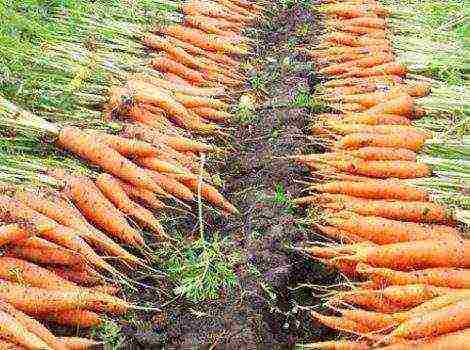Content
Onions are used for cooking many dishes, so any housewife, when choosing crops for growing on her site, prefers several varieties at once. Variety in the beds allows you to create new masterpieces in the kitchen, and at the same time improve your gardening. In this article, we will find out what types of onions are, home and wild, talk about their description and find out the main characteristics.
Varietal variety of onions: what types are there?
Adopting the experience of their ancestors, preference is often given to the same varieties of onions when planting a vegetable garden. It's time to change stereotypes, improve and achieve new results, because the dish can sparkle with new flavor notes if you use Setton or Leek instead of the usual onion. Moreover, in central Russia, you can plant a large number of varieties, as practice has shown. At least lettuce, even green. And then we will find out where which species can grow.
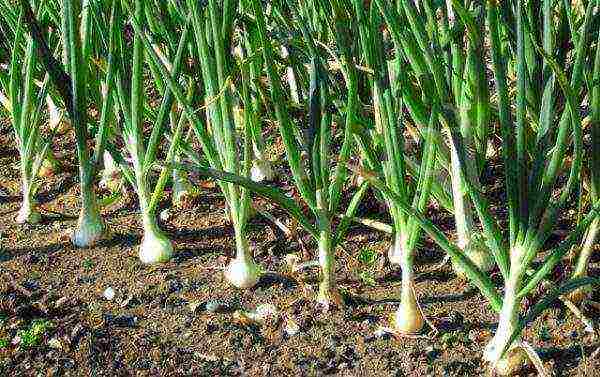 Onions in the garden
Onions in the garden
To determine the choice of seeds for bulbous plants, you need to familiarize yourself with the features of different species, their preferences and planting nuances. It is also worth paying attention to the correspondence of the growing conditions of the culture and the climate of the region. This is what will be discussed in this article.
The most popular onion varieties
All varieties of culture differ not only in taste, but also in planting rules, ripening period, and yield.
Onion sets
- Chalcedony grows outdoors, is very popular among gardeners in the southern regions of Russia. Suitable for growing feathers and root crops. The ripening period (from planting to harvesting) is 95-110 days. An average of 4 kg is removed from a square meter with a marketable weight of one small specimen of 85-100 grams. Sometimes there are onions weighing up to 400 grams. There is a good immunity to peronosporosis, vulnerability to cervical rot. Taste: pleasant with a slight spice.
- Stuttgarter Riesen early ripening, from sowing to harvesting takes about 3 months. Rounded-flat onions weigh 150-250 grams on average, but there are also giants up to 350 grams. The plant rarely shoots arrows, does not become covered with spots typical of downy mildew. Taste: spicy with a pungent aroma.
- Sowball is characterized by large, rounded bulbs with an average weight of up to 200 grams. The root crop ripens for about 100-110 days, gives a good harvest. Taste: delicate with a slight hint of pungency, used mainly for making salads.
Onions (turnip)
- Goldfish represents a mid-season species, differs in round, medium-sized onions weighing about 60-70 grams. Used for greenery and growing turnip for planting next season. The middle is white and juicy with a slight edge.
- The shaman belongs to the early ripening varieties, ripens in 86-95 days. The root crop has an elongated shape, a pink-red rather juicy middle. The average weight of a turnip is 55-65 gr. Advantages: stable high yield, high taste. Stored for a short time.
- Oporto ripens in 98-107 days, belongs to the mid-season species. The weight of the turnip reaches 270-300 gr., The shape is correct round. Advantages: high yield when using seedlings, immunity to diseases and pests, retains its presentation for a long time.The palatability allows the use of porto for all types of processing.
Varieties of salad onions
- Exibishen ripens for about 130 days and tastes very sweet with abundant juice. The turnips are round and very large, reaching 550 gr., But there are also specimens of 700-800 gr. The only drawback of the culture is considered a small storage period (no more than 3 months).
- Yalta is incredibly popular due to its excellent taste. The plant ripens in 138-150 days, turnips are large flattened purple tones, reaching an average of 200 grams. In the middle lane, the variety can be grown using seedlings. Onions are stored for up to 4 months.
- Ermak is the ripening record holder, the crop is removed 75-95 days after sowing. Differs in good immunity, long shelf life (up to the next season). The gastronomic feature is a soft juicy texture with a slight pungency.
Red onion
- The crimson ball ripens in 85-95 days, yields a stable harvest every year. Dark purple rounded turnips live up to the name. The middle is juicy with a pleasant taste, set off by a light speck. The drawback is the short shelf life (up to 4 months).
- Campillo F1 Introduces Red Onion Hybrid, which has a rounded shape with a dense center and a pleasant purple tint. Advantage - pigment does not transfer to kitchen utensils and fabrics. Taste qualities: delicate structure with abundant juice production, well-perceptible sweetness. It can be stored for a long time without losing its properties.
- Retro is famous for its high yield and fast ripening (up to 90 days). The middle is tender, dark red with white stripes. Onions are very sweet without pungency, so they are even added to children's salads.
White onion
- Albenka is fast ripening (up to 95 days) and interesting taste qualities that combine light pungency and sweetness. Grown for herbs and onion sets. Not suitable for long-term storage.
- The white globe has good seed germination and quick ripening. You can harvest the crop in 95-105 days after planting. A rounded, slightly elongated turnip weighs an average of 160 grams. The variety has a high stable yield, immunity to fusarium.
- Sterling is a group of white onion hybrids with a ripening period of 110-120 days. The mass of an average turnip is 120-200 gr. Rounded shape with white husk. The middle is soft and juicy with an unusual taste that is not similar to other species. The storage of the root crop is short (3-5 months), but when grown, immunity to many diseases and pests is noted.
Sweet onion
- Kaba ripens in 145-155 days, has immunity to disease. Productivity is stable, stored for up to 4-5 months. The weight of a round turnip with a slight pressure is 80-125 grams. The middle is dense, but sweet and juicy.
- Globo ripens 110-125 days, the size of the root crop is a real giant. The weight of one onion reaches 600-900 grams. The taste is delicate, sweetish, ideal for salads and various other dishes. Growing a crop from seedlings, you can get a crop from 1 m2 to 12 kg.
- Spanish 313 is distinguished by its yield, immunity to diseases and pests, suitable for fresh and processed consumption. The weight of an average turnip is 120-150 grams, the shape is round and large. Onions have long been recognized by domestic gardeners and are popular due to their unpretentious care and sweet taste. Productivity from 1m2 - 4-5 kg.
Names of varieties of onions for storage
- Red Baron has a dark red color, the onion is rounded, slightly flattened. The plant ripens in just 90-95 days, the weight of the turnip is 95-110 grams. Advantages: stable, high yield, light taste with a slight spice.
- Volsky bow prefers nutritious light soils. The root crop ripens in 120-140 days with an average weight of 90-140 grams.The turnip grows in such a way that the top is on top of the soil, which simplifies collection. Taste features: spiciness is well felt.
- Orion represents an exclusive hybrid, which English breeders have been working on for a long time. The variety ripens quickly, which makes it possible to grow a crop even in the northern regions. The turnip has a regular rounded shape of a beautiful purple color, weighing an average of 150-200 grams. Orion is very popular among gardeners, but most likely it will not grow either in the Moscow region or in the Urals.
The best bulbs for the Moscow region
- Centurion has gained popularity all over the world due to its high taste. The rounded-elongated turnip reaches a weight of up to 110 g... The yield is average, but stable (up to 3-4 kg per 1 m2). Advantages of the variety: not susceptible to the release of arrows, long shelf life (up to 8-9 months), resistance to decay. The root vegetable has a pungent taste.
- Hercules is considered a prolific crop, yielding from one square meter to 8-9 kg of root crops. Breeders, working on a hybrid, initially set the task of obtaining a long-lasting onion. The result exceeded expectations - good resistance to diseases, long-term storage without loss of useful properties, resistance to the whims of nature. The weight of the turnip is up to 120 gr., The taste is at a height (light pungency, juiciness, moderately sweet).
- Sturon represents a hybrid grown by Dutch breeders. As a result of painstaking work, a variety was obtained that is resistant to diseases and pests, which retains its presentation well for 9-10 months. The plant ripens in 100-115 days, the weight of an average turnip is 120-150 grams. Gastronomic peculiarity: suitable for all types of processing, neutral flavor notes with a slight spice.
Observing all the recommendations for soil preparation, planting and care, you can remove a completely bountiful harvest of onions from the beds. And even celebrate a giant root crop every year, winning their own records.
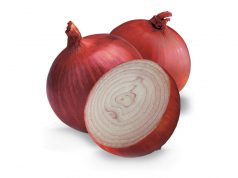
Greens grown in their own garden have greater beneficial properties than those purchased in the store and in the markets. In addition, you can eat it absolutely without fear for your health, since it contains a minimum of harmful substances when properly grown. Meanwhile, growing a product like lettuce is pretty easy. This requires a suitable site and some free time.
Description of the variety
Salad onions are also called spring onions. It is one of the earliest and easiest to grow. In the garden, it takes up relatively little space and does not require special care. In addition, it is resistant to most pests and common diseases.
 Lettuce onions are the earliest and most suitable for growing.
Lettuce onions are the earliest and most suitable for growing.
All varieties of lettuce onions are stored for no more than three to four months. They are divided according to their taste: spicy, semi-sharp, sweet. However, this division is arbitrary, since the properties of onions largely depend on the growing region. So, the sweetest of them can be purchased in the warm corners of Russia.
The following varieties are most popular:
- Exibition. Has a sweet taste, juicy. The ripening period is about one hundred and thirty days, the weight of the fruit reaches half a kilogram or more. Stored for no more than three months.
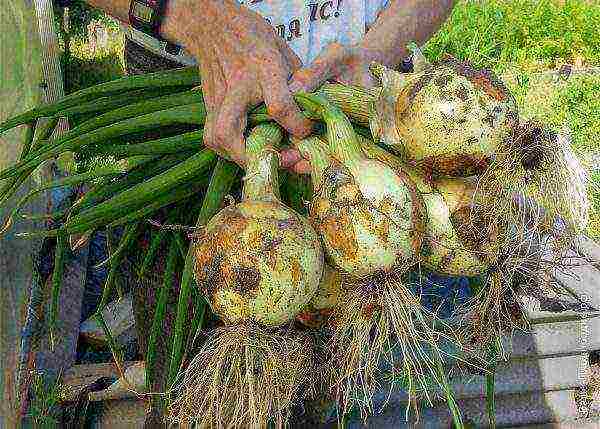 Bow Exhibition
Bow Exhibition
- Ermak... The first crop of the variety can be harvested after seventy-five days. The pulp is juicy, sweet. The bulbs are medium in size. Resistant to common diseases.
- Mazilla F1... An early maturing variety with a shelf life of up to four months. It has a deep red color and a rounded root crop. The variety is resistant to rot and common diseases.
- Yalta. Possesses the best taste characteristics. The average mass of pinkish fruits is two hundred grams, the ripening period is up to one hundred and fifty days. Storage time - up to four months It will not be difficult to grow Yalta onions.
 Yalta onion
Yalta onion
Salad onions are not grown using sets. For this, the seedling method is used with the use of seeds.
Beneficial features
Onions are used not only in cooking, but also in folk medicine. This is due to the presence in the product of a large amount of essential oils (it is their content that determines the pungency of taste), amino acids and vitamins of groups B, A, PP, E and H. In addition, onions are beneficial even when cooked.
Salad onions have the following characteristics:
- bactericidal;
- tonic;
- antiparasitic;
- antihistamines;
- healing;
- antiviral.

Salad onions are also known for their tonic properties. It is useful to use it for colds, lack of appetite, diseases of the cardiovascular system, weak immunity and vitamin deficiency. It is also suitable as a means for the prevention of cancer.
In traditional medicine recipes, green feathers prevent the appearance of stones in bile, improve the condition of hair, skin and nails, and also have a beneficial effect on blood formation. Onions strengthens capillaries, normalizes intestinal microflora and blood clotting. It is used in recipes for osteoporosis, conjunctivitis, ovarian and urinary tract diseases.
Do not forget that onions bring not only benefits to the body, but also harm. It should not be consumed in case of high stomach acidity, ulcers and intestinal irritation. 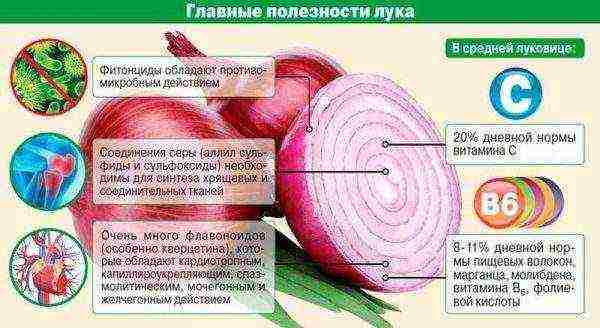
Onions can be most useful during cold weather, autumn, winter and spring seasons. In the summer, it is recommended to eat greens obtained as a result of its cultivation.
Reproduction
The cultivation of lettuce onions in Russia is carried out mainly in seedlings, as the most convenient and reliable, taking into account the climate and soil quality. For the preparation of seedlings, you can use cassettes, boxes and peat glasses.
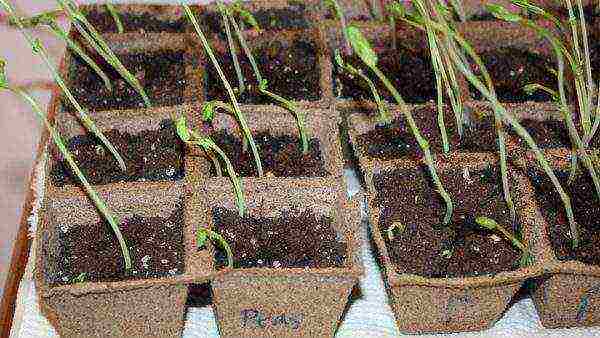 Peat pots are often used for seedlings.
Peat pots are often used for seedlings.
Before planting, you must carefully prepare the soil and select high-quality seed. NSIt is recommended to purchase it in specialized stores and farms. At the same time, the packaging must be intact, and the shelf life must not have expired. Seeds older than three years are often difficult to germinate.
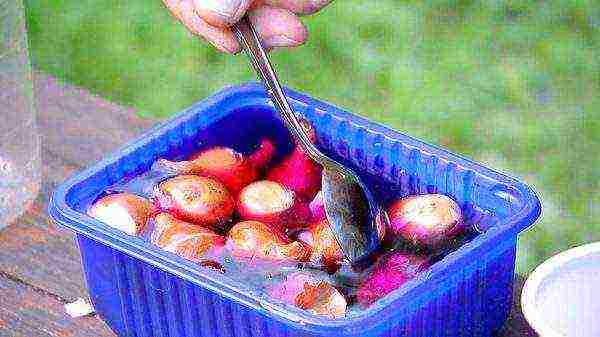 Before direct planting, the planting material should also be treated with potassium permanganate. To do this, they must be immersed in a strong solution of the drug for ten to fifteen minutes, then removed and rinsed with clean water.
Before direct planting, the planting material should also be treated with potassium permanganate. To do this, they must be immersed in a strong solution of the drug for ten to fifteen minutes, then removed and rinsed with clean water.
After the procedure, they should be laid out on a cotton cloth or napkin moistened with water and covered with the other edge on top. You need to germinate the seeds in a warm place until the roots appear. As it dries, the cloth should be moistened with water.
Onions are often grown using sets. The production of salad vegetables should not be carried out using this technology.
Growing
After processing the seeds, you can proceed to the direct harvesting of seedlings. It should grow within one and a half to two months, so it is best to plant in mid to late March.
Landing
You can grow seedlings on a windowsill or in a greenhouse.... This article will tell you how to grow green onions on a windowsill. To do this, it is necessary to fill the containers with soil about fifteen centimeters and warm it up in the oven at a temperature of eighty to one hundred degrees. You can also take advantage of the boiling water spill and save time. Thus, it will be decontaminated and protected from possible future diseases. It is best to prepare peat soil or a purchased soil mixture.
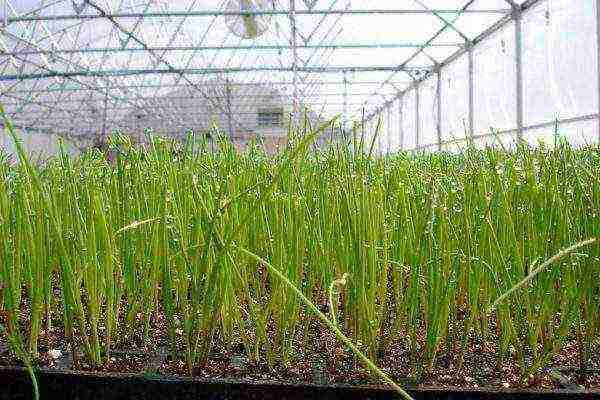 To grow onions in greenhouses, regular watering, adherence to the temperature regime and air access to the greenhouse are required
To grow onions in greenhouses, regular watering, adherence to the temperature regime and air access to the greenhouse are required
The seeds should be immersed in the soil to a depth of about two centimeters (one standard cassette fits about three to four units of seeds). Top it up with a thin layer of the remaining soil mixture.Next, cover the boxes with foil and place in a place where the temperature reaches twenty degrees Celsius. The secrets of growing onions in a greenhouse in winter are revealed at this link.
Seedlings should be periodically ventilated by removing the film. Also, the soil must be spilled with water as it dries.
After the required period has passed, two to three days before planting, the seedlings need to be placed for an hour on the street or in a greenhouse (if planting is planned in it) for hardening.
Transplanting into the ground should be carried out when the soil warms up to ten degrees Celsius. The distance between the rows should be thirty centimeters, between the plants - fifteen, and the planting depth - fifteen to twenty centimeters. It is important that a lump of seedling soil remains on the roots. So the process of adaptation to new conditions will be much easier and faster. In this case, immediately after tamping, the ridge must be watered abundantly with water. The next watering should be done after a week.
 Onions are planted in beds
Onions are planted in beds
Fertilizers should be used potash with a low nitrogen content. For the first time, soil enrichment should be carried out in the fall before planting. Further feeding will be required during the formation of the bulbs. For ten square meters of the ridge, it is necessary to use about twenty grams of phosphorus-potassium fertilizers and up to one kilogram of wood ash... All this is required to be added to the soil in the form of a solution during the next watering.
Salad onions do not require thinning, but regular weeding is necessary. After weeding, it is useful to loosen the soil a little. Herbicides can also be used to control weeds. However, it is important to carefully control their dosage so as not to saturate the product with substances harmful to humans. Watering should be carried out as the soil dries out.
Harvesting is carried out when its stems reach a height of fifteen centimeters and a pencil thickness. At the same time, both root crops and feathers can be eaten. Before storing them, they should be cleaned of adhered soil and dried thoroughly.
High humidity during cultivation and after harvesting can have a detrimental effect on the condition of the onion. In the first case, the likelihood of plant disease is high, in the second, the duration of storage at high humidity can be significantly reduced.
Video
conclusions
Salad onions grown on the site are not only a tasty vegetable suitable for almost any culinary field, but also a useful product that can withstand many human diseases. Moreover, it is easy to plant and grow, and after harvesting, it can be stored for another three to four months. How to store onions at home is described here. However, it is important to remember that it is impossible to grow salad onions using sevka, so you will have to make seedlings, which will also require care and some additional time.
Home / Garden and vegetable garden / Vegetables, berries and fruits / The best varieties of sweet onions and features of their cultivation and care

- 1. Popular varieties of sweet onions
- 2. Growing sweet onions
- 3. Caring for the planting of sweet onions
- 4. Harvesting sweet onions
- 5. Storing sweet onions
Onions are a very famous vegetable crop, with proper agricultural technology, they give a good harvest and therefore are grown practically throughout the territory of Russia. Depending on the variety, onions can be spicy, semi-hot and sweet. Sweet onions has a juicy, sweetish taste and is very often used as an additive for salads. Sweet onions are divided into white and red varieties, with red onions being considered sweeter. Sweet onions contain 6 - 7% sugar and about the same amount of essential oils in it, which give the onion a pungent taste.
Sweet onion it can be grown in almost any region of the country, but, depending on the region, the method of planting it differs.In the southern parts of our country, it can be grown even from seeds, while in colder regions (the middle zone of Russia and the northern zones) it can only be obtained by planting onions - sets or seedlings. Seeded sweet onion in central Russia will not grow.
1. Popular varieties of sweet onions
1. Red Baron F1 - unpretentious sweet type plant. The bulb is red in color, well adapted to different growing conditions, has an excellent taste. Bulbs are round, slightly flattened on top, weighing up to 150 g. Excellent storage, high yield.
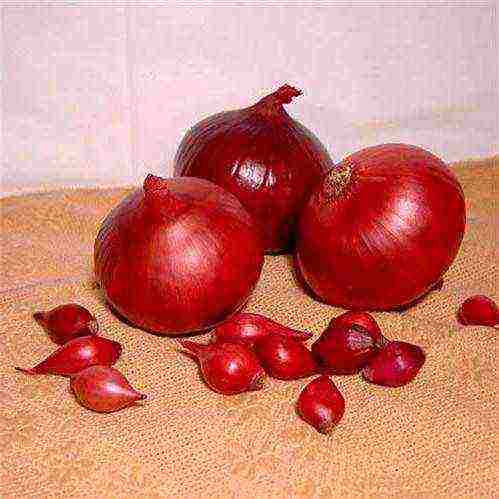
fig. 1 Sweet onion variety Red Baron F1
2. Globo - mid-season, high-yielding sweet onion variety, with very large bulbs (some specimens grow up to 1 kg). The bulb is round, golden in color, with a very juicy and delicate taste. Among the shortcomings - not suitability for long-term storage, but when grown, onions are resistant to many diseases.
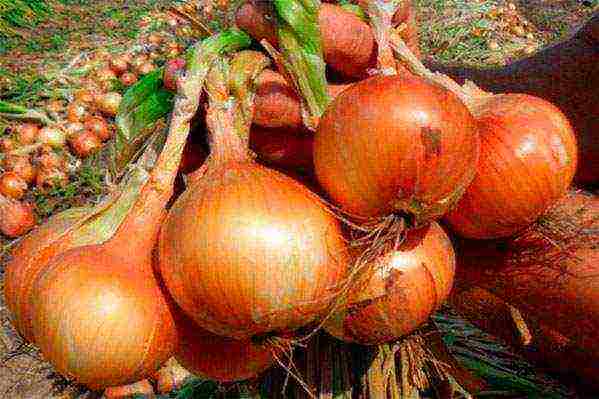
fig. 2 Onion variety Globo
3. Exibition - many consider this medium late variety to be the best among all salad onions. This variety forms a large head (up to half a kilogram) of golden color with delicate white flesh. The variety is high yielding, unpretentious and disease resistant. Among the disadvantages is a short shelf life (about 3 - 4 months).

fig. 3 A variety of sweet onions Exibishen
4. Campillo F1 - red hybrid bow. The bulb is round, purple in color, weighing about 150 g. Campillo has a juicy, soft taste. The variety is resistant to disease and can be grown in cold climates. The keeping quality of this variety is average.

fig. 4 Onion variety Campillo F1
5. Comet F1 - hybrid mid-season white onion for salad purposes. The bulbs are dense, round, white in color, weighing about 70 g. The taste of onions is sweet and pleasant. Storage - about 6 - 7 months, the yield is quite high.
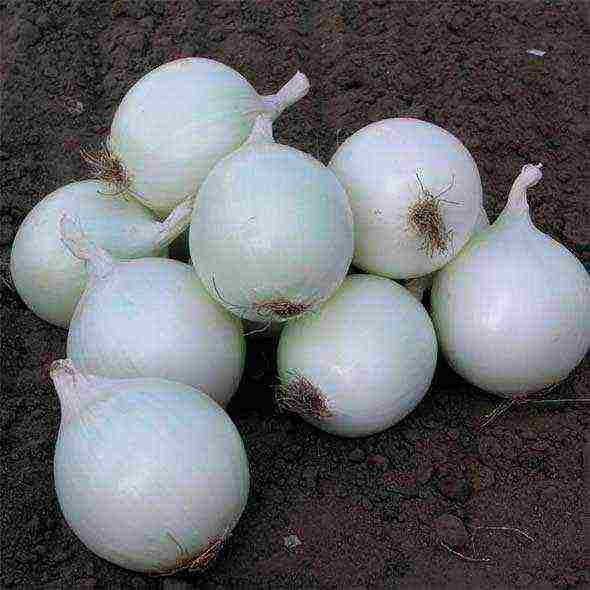
Fig. 5 Sweet onion variety Comet F1
6. Retro - high-yielding early flat-round onion. The color of the scales of the Retro onion is red, the flesh is white and has an excellent taste. The average bulb weight is 75 - 90 g. The "Retro" variety is very resistant to diseases. The disadvantage of this bow is poor keeping quality.
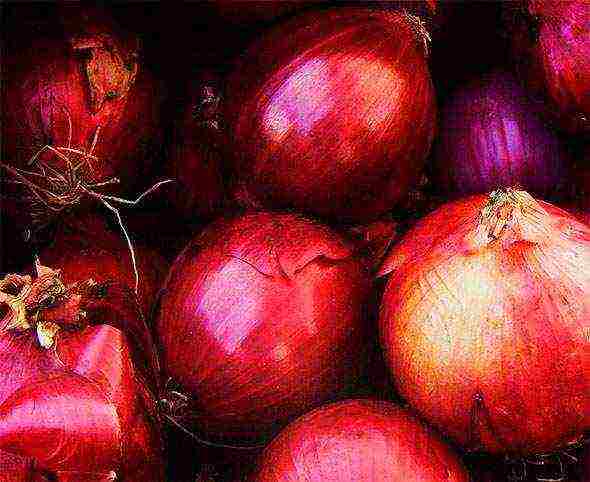
fig. 6 Onion variety Retro
7. Black Prince is a universal (for salads and preservation) mid-season variety. The bulb is dark purple, weighing up to 100 g. The yield of the Black Prince is very high. Due to their dense scales, onions are perfectly stored in winter.
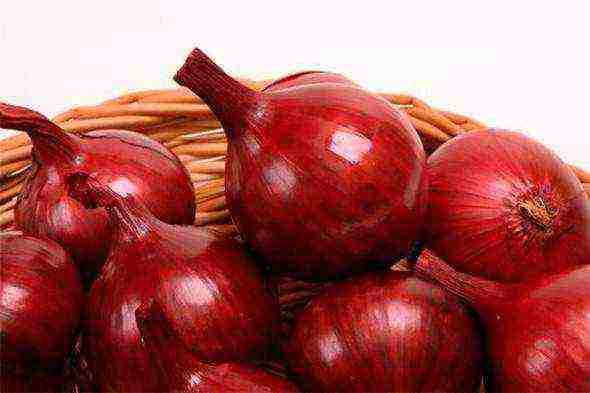
fig. 7 Variety of sweet onions Black prince
8. Yukont is an early-ripening variety with flat-round, red bulbs weighing 85 - 100 g. The taste of onion pulp is moderately spicy, but this is offset by a very high yield. Keeping quality is very good, the harvest can be stored all winter.
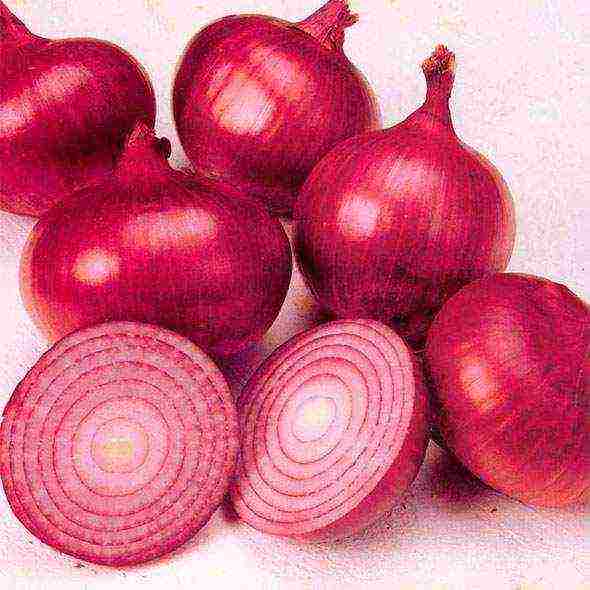
fig. 8 Yukont onion variety
9. Aleko is a mid-season variety with original purple bulbs. A very productive variety, in one nest of this variety there are 2 - 3 bulbs, and the weight of each reaches 100 g. The variety is not resistant to diseases. The bulbs are dense and juicy, the flesh is white, slightly sharp. The variety is suitable for long-term storage.
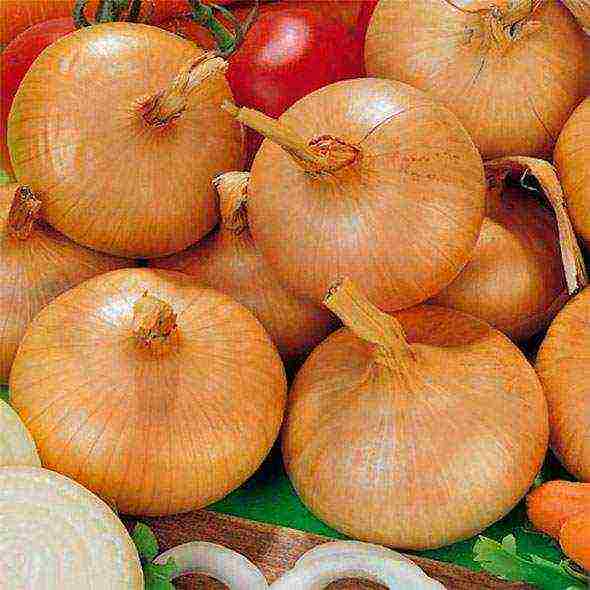
fig. 9 Aleko sweet onion variety
10. Greatful Red F1 - a very fruitful mid-late ripening red hybrid. The bulbs grow quite large - up to 250 g. The taste of onions is semi-sharp. This variety is excellently transported and has a long shelf life.
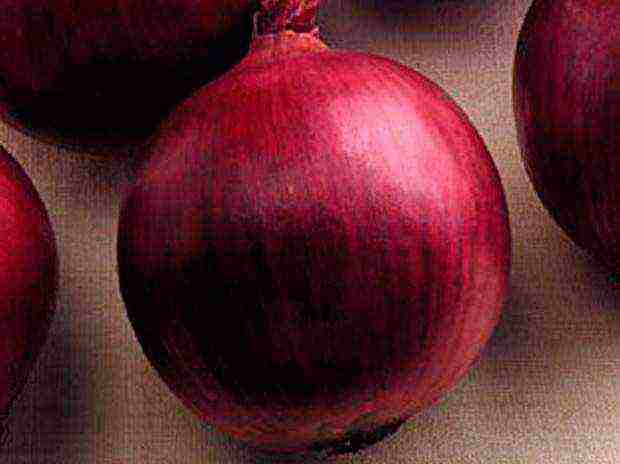
fig. 10 Onion variety Greatful Red F12. Growing sweet onions
In the climate of the Central Russian region sweet onions grown mainly through seedlings. Sowing for seedlings of sweet onions is carried out at the end of February (possible at the beginning of March) in any suitable container. The soil should be prepared loose and fertile by adding sand and humus to the garden soil. For disinfection and as fertilizer, you can add ash to the mixture, mix everything well.
It is advisable to soak the seeds before planting, then dry them and can be sown.
Before planting, the earthen mixture must be well watered.Onion seeds are sown at a distance of no more than 3 cm from each other, then they should be sprinkled with earth with a layer of 1 - 1.5 cm.
In a container with seeds, you can make a greenhouse effect by covering it with glass or transparent film, and install it in a place with a temperature of 22 - 27 degrees. After germination, remove the film and place the container in a bright place, but with a lower temperature (10 - 13 degrees). Seedlings need to be looked after - thinned out, fed on time.
When the seedlings grow up and are ready for planting (around the beginning of May), you need to prepare beds for it. Add about a bucket of humus, wood ash and complex mineral fertilizers to the 1 m garden bed according to the attached instructions (read this article about mineral fertilizers).
Plants should be planted either in cloudy weather, or in the evening. Before planting, the seedlings must be well watered so as not to damage their roots. Before planting, the leaves and roots of the seedlings can be cut to a third of their length for better plant survival.
To obtain large bulbs when planting seedlings, we maintain a distance of 25 - 30 cm, between seedlings - 12 - 15 cm. We deepen the plants until the leaves begin to branch (no deeper).
3. Caring for the planting of sweet onions
Planting onions needs watering, gradually reducing watering by the second half of the growing season. By the beginning of onion ripening, watering should be stopped completely, otherwise the onion will rot.
In May - June, onions can be fed with organic matter; during the formation of the bulb, it is advisable to fertilize with phosphorus-potassium fertilizers. As necessary, the bed is loosened, weeds are removed.
4. Harvesting sweet onions
As soon as the leaves of the onion turn yellow and lie down, the onion should be removed and, for better storage, dried under a canopy for 10 - 14 days.
5. Storing sweet onions
Store the harvest sweet onions it is necessary in a dry place at a temperature not higher than 16 - 18 C. It is worth remembering that many varieties of sweet onions can last a maximum of January, therefore, along with sweet onions, ordinary (spicy) ones should also be planted onion varieties with a long shelf life.
If you do not want to miss new materials on our site, you can subscribe to updates.
Copying materials to your sites is allowed only with the indication of the author (Natalia Vasilevskaya or Dmitry Vasilevsky) and an indexed direct link to the site
Do you want to grow onions but don't know which variety to choose? Then be sure to read our article.
We will introduce you to the best varieties of onions that you can grow on your site without any problems.
When choosing a variety of onions for a summer residence, pay attention to its regionality. Depending on the area of growth, onion varieties can be divided into 2 types:
- southern;
- northern.
Southern varieties of onions do not last very long, but they are not very spicy in taste. Some of them are called sweet at all and are referred to as salad types of onions. If you want to get southern varieties of onions in the northern regions or in the middle lane, it is worth growing them through seedlings.
Northern varieties of onions are pungent in taste, but have excellent keeping quality.
White onions are also distinguished. It has a softer and sweeter taste. White onions are among the salad varieties. However, such bulbs are poorly stored, quickly damaged by pests, soften and rot.
In France, it is from white onions that the famous onion soup is prepared.
There are also onion varieties according to the growing season: in the early varieties this period is 90-100 days, in the middle ones - 100-120 days, and in the later ones - more than 120 days.
Depending on the size of the bulb, there are 3 types:
- small - less than 50 g;
- medium - 50-100 g;
- large - more than 100 g.
Depending on how many bulbs can form in the nest, varieties are distinguished:
- small-sized (1-2 bulbs);
- medium-sized (3-4 bulbs);
- multi-nested (5 or more bulbs).
Nesting largely depends on the size of the seedlings, as well as on the growing conditions of the crop. If the planting is larger, and the fertility and moisture content of the soil is higher, then the number of bulbs in the nest will be greater.
Spicy, semi-sharp, sweet onions - looking for differences
All spicy varieties of onions are early ripening. They are distinguished by good keeping quality, high content of essential oils and sugars, but at the same time they are less productive. Such varieties, as a rule, are covered with several layers of outer scales, and therefore they can be removed not only by hand, but also using specialized equipment.
Peninsular onion varieties have few outer scales, and the flesh is not as dense and sharp. Such a bow, when harvesting with special equipment, is often injured and quickly deteriorates. Semi-sharp varieties are considered to be medium-hard and take longer to ripen. However, they give a higher yield than sharp varieties.
Sweet onions taste great and are often used fresh. They give a high yield, but it is stored for a short time. Sharp and semi-sharp onions can be grown in any region. In the southern regions, during the growing season, crops can be obtained even from seeds. And in the middle lane and northern zones - only through seedlings or by planting seedlings. Sweet varieties are grown mostly in hot southern regions from seeds.
Popular varieties of red, yellow and white onions
We bring to your attention well-proven varieties of onions, which are preferred by the absolute majority of gardeners.
Kaba
Late-ripening variety with dense round-flat and rounded bulbs running downwards. The pulp is white, sometimes with a greenish tinge. The outer scales are yellow or light brown. The variety is not resistant to downy mildew (downy mildew), it is also damaged by onion fly.
| Use | Taste | Growing method | Bulb weight (g) | Keeping quality | |
| peninsular |
70-145 |
unsatisfactory | |||
Red baron
Early ripe variety. The bulbs are round, flattened at the top and bottom, red or dark purple on the outside and inside. For larger bulbs, it is recommended to grow this variety through seedlings.
| Use | Taste | Growing method | Bulb weight (g) | Keeping quality | |
| peninsular |
130-150 |
excellent | |||
Snowball
A medium early variety of white onions. It has almost round and white (both outside and inside) bulbs. Quite resistant to shooting, but moderately susceptible to downy mildew and neck rot.
| Use | Taste | Growing method | Bulb weight (g) | Keeping quality | |
| peninsular |
120-200 |
average | |||
Strigunovsky local
An early early ripening variety. It has round, dense bulbs with light pulp and pink or brown outer scales. It can grow in both hot and cool climates without problems.
| Use | Taste | Growing method | Bulb weight (g) | Keeping quality | |
| very spicy |
45-80 |
excellent | |||
Sturon
Mid-season variety. The bulbs are round, white in color, densely covered with a yellow-brown skin. Resistant to diseases and shooting.
| Use | Taste | Growing method | Bulb weight (g) | Keeping quality | |
|
|
spicy |
70-180 |
excellent | ||
Texas yellow
Early ripe variety. The bulbs are round, rather large, straw-yellow in color with dense white flesh. Resistant to pink root rot.
| Use | Taste | Growing method | Bulb weight (g) | Keeping quality | |
| peninsular |
|
80-150 |
average | ||
Centurion F1
Medium early hybrid with medium-sized, round-elongated bulbs. The pulp is juicy, white, the outer scales are golden brown. The hybrid is resistant to shooting and major onion diseases.
| Use | Taste | Growing method | Bulb weight (g) | Keeping quality | |
| spicy |
65-150 |
excellent | |||
Each of these varieties has stood the test of time and is popular with gardeners. Pay attention to them when you go to the store for sets or onion seeds.

